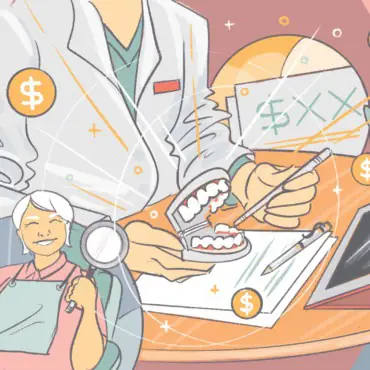Oral health problems and diseases impact roughly 3.5 billion people around the globe. Although most of them can be prevented, they often go unnoticed. So, they end up causing aches, discomfort, and even tooth loss. Unfortunately, oral health complications and disease prevalence will only increase if no diagnosis or treatment is provided.
Unless you book a dentist appointment regularly for an exam and cleaning, you are at risk for dental problems. When these problems are left unmanaged, they can result in bad breath, yellow teeth, and more serious complications. Here are the most typical oral health problems that can go unnoticed without dental visits.
1) Gum disease – when the soft tissue around the teeth becomes a real problem
About 47.2% of American adults have gum disease. That’s about 64.7 million people over the age of 30, a study shows. Also known as periodontitis, gum disease can be a tricky problem to treat. The worse the infection, the bigger the damage to the soft tissue. Eventually, the supporting bone of the teeth also suffers damage and becomes prone to tooth loss.
We reward you for going to your dental checkup!
To prevent that from happening, find a dentist. With a simple check-up, they can assess your dental health, oral hygiene, and overall tooth strength. Regular appointments elevate your odds of successful gum disease treatment. They also reduce the possibility of developing it in the first place.
2) Tooth sensitivity – when the heat and cold get in your way
Have you ever felt a piercing toothache after taking a bite of chocolate or due to a change in temperature? Then you are most likely dealing with dentin sensitivity, also known as tooth sensitivity. Around 1 in 8 Americans suffer from super sensitive teeth.
With this condition, teeth can become sensitive to hot and/or cold food and drink, sweet flavors, and more. This is another common occurrence that can be managed. Contact a dentist near you and let them know about the problems you are having. A dentist can advise you on how to revamp your dental hygiene and reduce this sensitivity.
They can root out the cause and treat the issue. Remember, problems such as these don’t resolve on their own. You need adequate dental treatment. When ignored, it can lead to facial swelling, dental aches, significant discomfort, and possibly tooth loss.
3) Severe tooth decay – when the tooth no longer looks the way you want it to
Sugars that remain in the mouth break down into acid and form dental plaque, causing damage and leading to tooth decay. If a patient allows this plaque to build up, their teeth can develop holes, leading to cavities and gum disease. It’s not uncommon for those with tooth decay to also get a dental abscess.
Although tooth decay won’t always cause pain, it can make the teeth susceptible to:
- Black, brown, or gray tooth spots
- Bad breath
- Toothache
- Sensitivity
- Disgusting taste in the mouth
People think that by letting it go, the tooth will heal on its own. But, that couldn’t be further from the truth. Decay within a tooth deepens and widens over time, making it brittle and prone to cracking. To avoid that result, dental check-ups should be your top priority. Besides, tooth decay is a lot cheaper to treat while it’s still in the early stages.
4) Some forms of oral cancer – when a simple change becomes a pressing matter
Over 90% of all tumors in the oral cavity are squamous cell carcinomas (SCC). This is the second most prevalent type of skin cancer. It usually occurs after exposure to significant UV damage to certain parts of the body, either from tanning or sunbeds.
The problem with these oral diseases is that, in their early stages, they don’t cause any symptoms. It is painless and doesn’t lead to obvious physical changes. However, a dentist is likely to notice the changes in precursor tissue.
Signs may resemble red or white tissue patches. That’s why a lot of dentists recommend that as soon as you develop a discolored or sore area in the mouth, you get a check-up. This will be your most practical dental health tactic.
5) Oral thrush – when the mouth lining develops white patches
The mouth can develop a yeast infection. This is what experts call oral thrush. It can make white lesions appear on the inner cheeks, tongue, and inside of the mouth. They can spread to the gums and throat. With regular dental treatment, oral thrush is only a minor issue.
We reward you for going to your dental checkup!
Conclusion
When in doubt about oral health problems and diseases, be sure to talk to your dentist. They can give you a thorough cleaning and practical advice on how to manage the problem. This will help you achieve and enjoy peace of mind.








